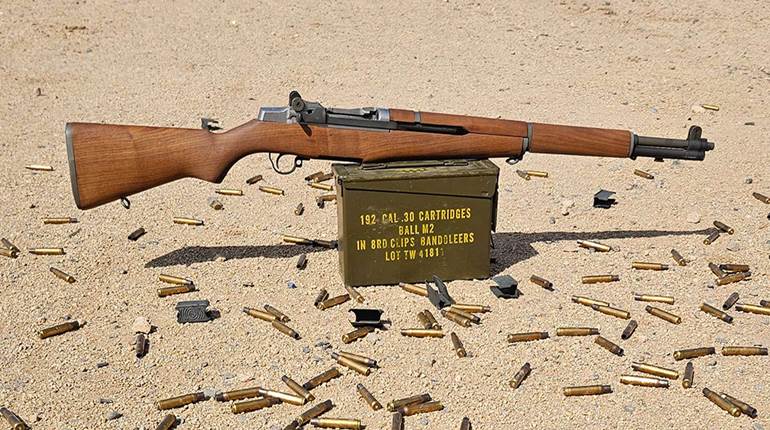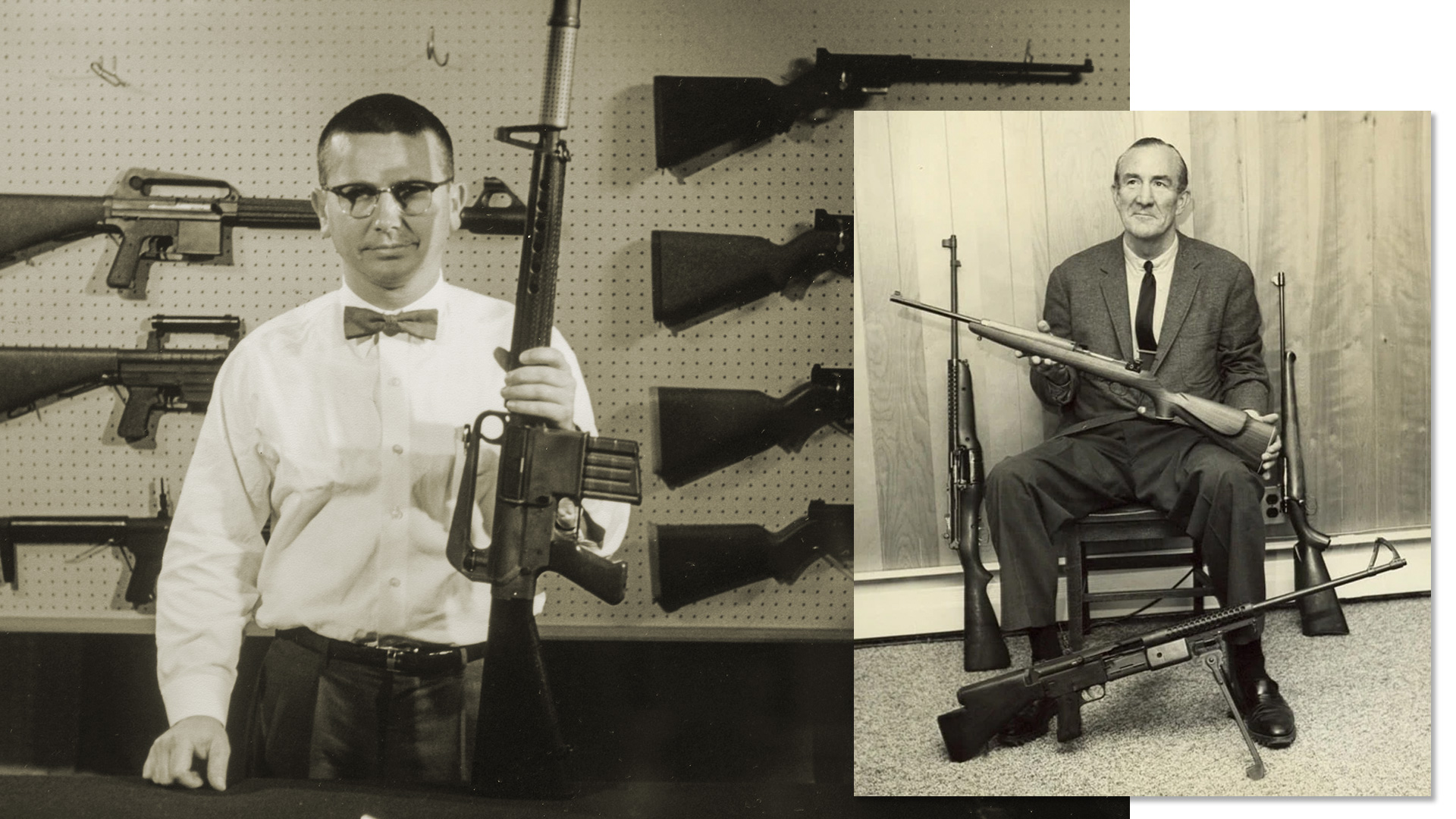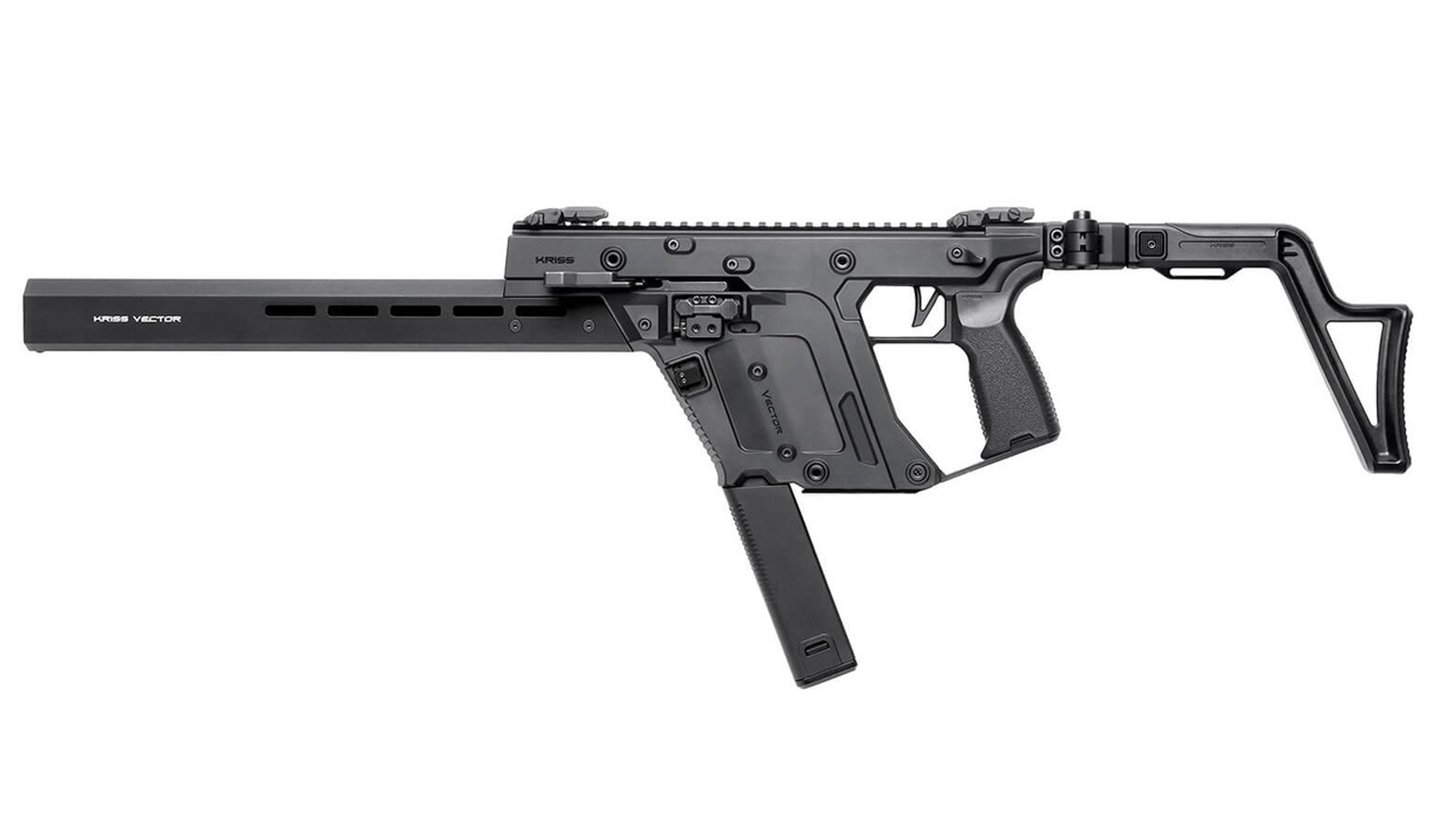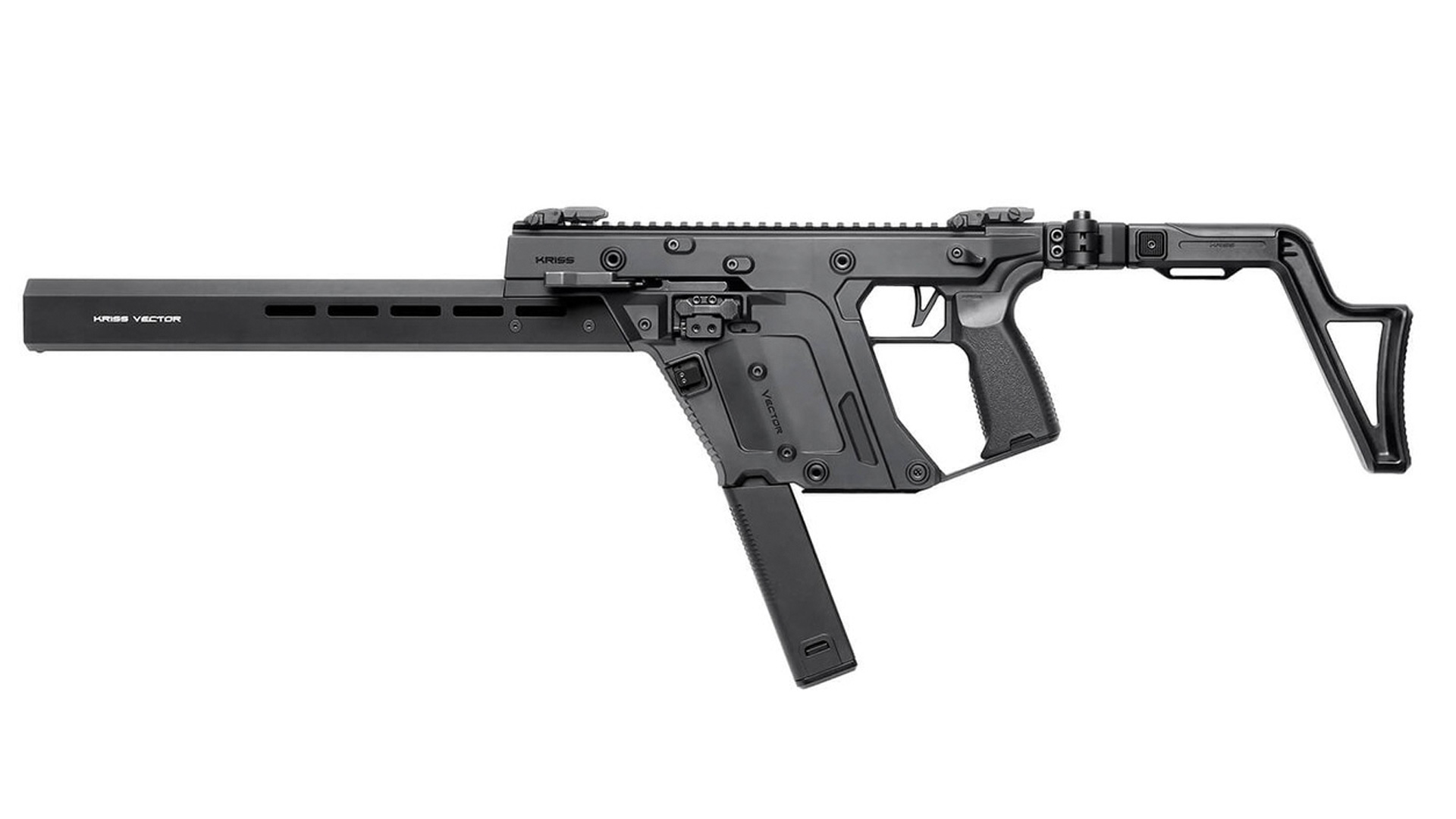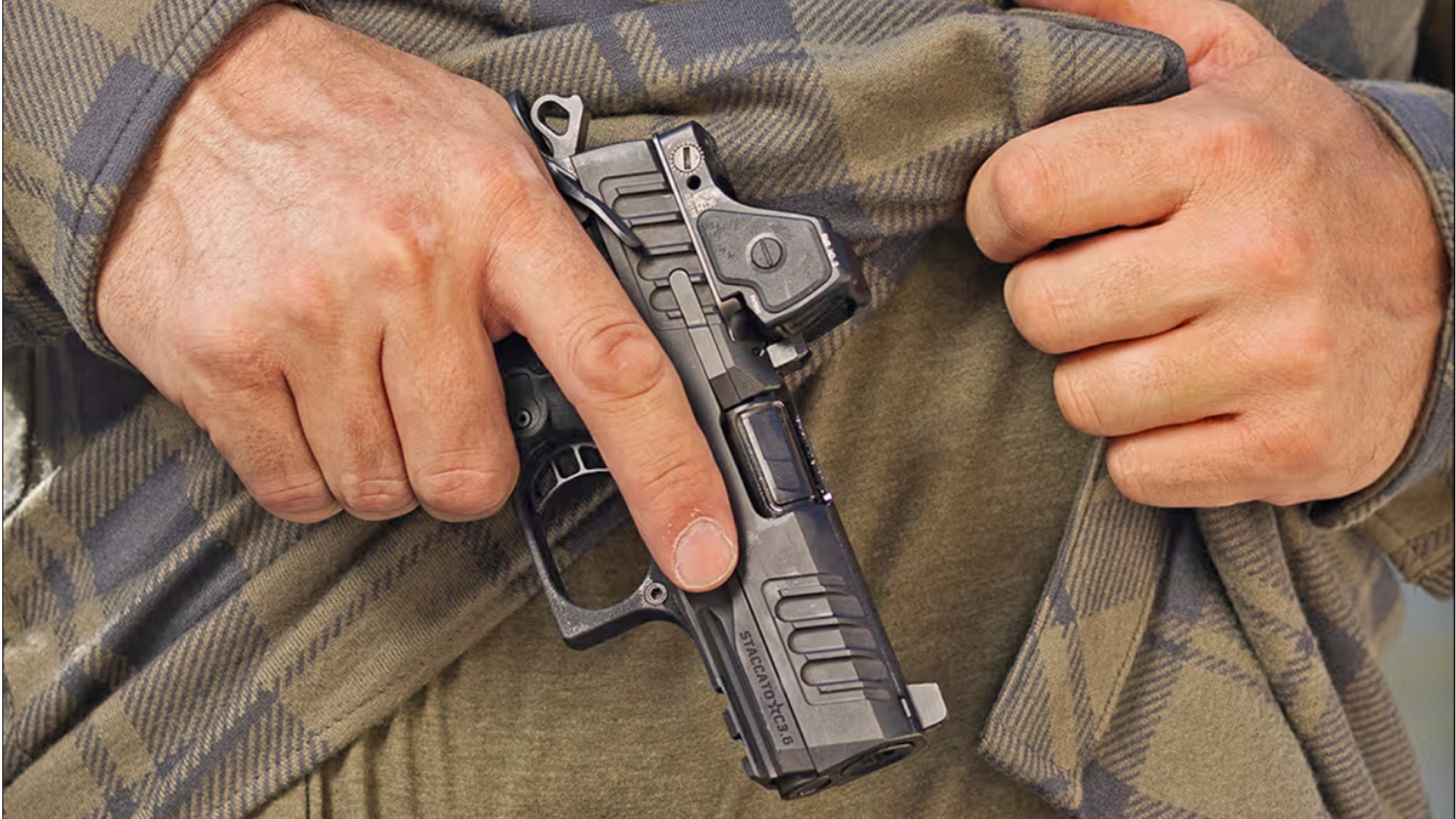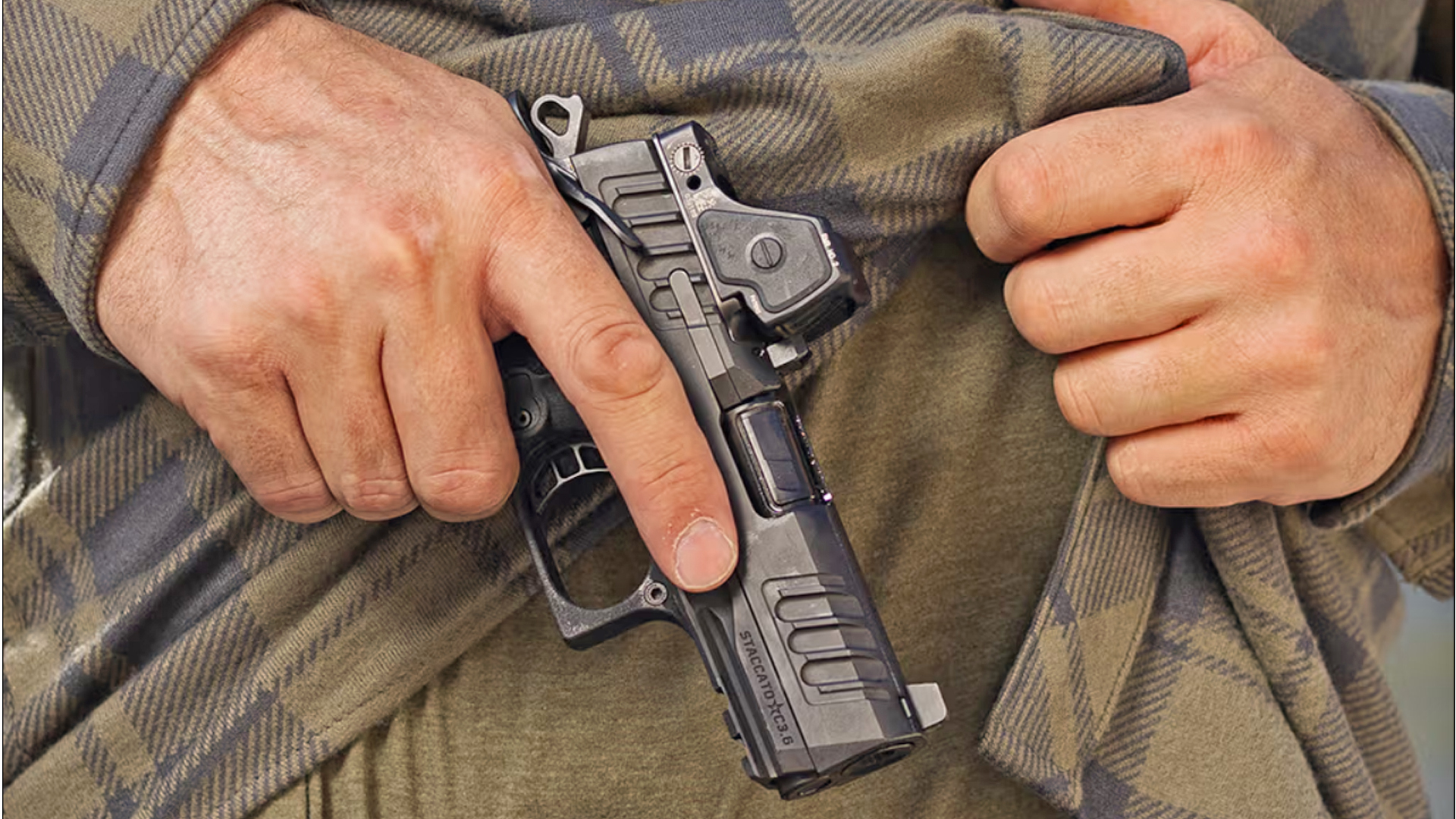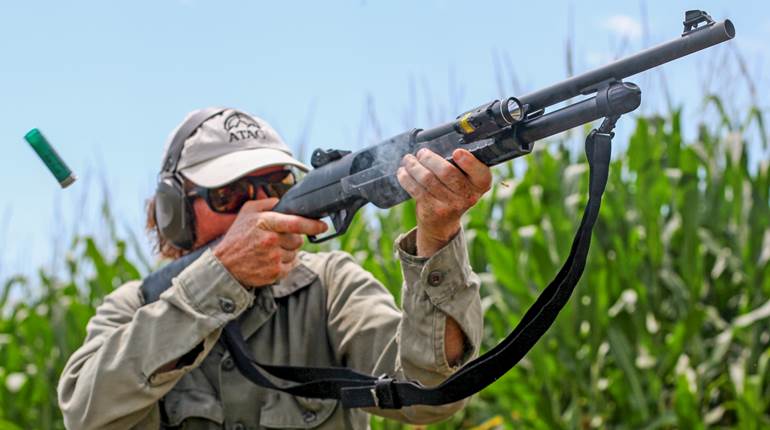
This article was originally published in the January 1994 issue of American Rifleman.
It probably comes as no surprise that the most widely used rifle in the history of the United States is the U.S. Rifle, Cal. .30, M1. The M1 was manufactured in greater numbers than any American military small arm with the exception of its contemporary, the M1 Carbine. Popularly known as the Garand (after its inventor John C. Garand), the M1 saw widespread service in World War II and Korea, where it proved an excellent combat rifle.
Millions of American servicemen became intimately familiar with the M1 from World War II until its replacement in the late 1950s and early 1960s by the M14. 
However, the rifle as originally adopted and manufactured for the first four years was markedly different in one major respect from the rifle so familiar to veterans. In order to discuss the M1 rifle in its original configuration, a brief history leading up to its adoption as the first semi-automatic U.S.-issue rifle is necessary. 
John Cantius Garand, a naturalized U.S. citizen of French-Canadian origin, was employed by the Springfield Armory in 1919. He quickly gained a reputation as a talented arms designer and was put to work developing a semi-automatic service rifle. His initial design, submitted for testing in 1921, centered around a novel primer- operatedmechanism. The concept was promising and, during the next few years, he developed several different primer-actuated designs chambered for the standard M1906 .30 cal. (.30-'06) cartridge. While the rifles were under development, the Ordnance Dept. acquired the services of noted arms designer John D. Pedersen, who was also working on a semi-automatic design.
Pedersen strongly believed a .276-cal. cartridge would be preferable to the standard .30-cal. round because it would permit a lighter rifle and more ammunition could be carried. Pedersen's working prototype was completed in late 1925 and functioned well in testing. 
While Pedersen was refining his .276 cal. toggle-action semi-automatic, Garand was forced "back to the drawing board" due to adoption of the .30 cal. M1 cartridge in 1925. Although both .30-cal. cartridges could be used in many U.S. arms, the new M1 cartridge had a primer of different construction that negated use of Garand's primer-actuated mechanism. He responded by designing a more conventional gas-operated rifle having the same basic breech mechanism and other operating features as his earlier rifle.
He and Pedersen continued to refine their respective designs. Pedersen's advocacy of the .276 favorably impressed a number of influential people in the Ordnance Dept. Consequently, on Dec. 5, 1927, the development of a prototype .276 Garand was ordered. The result was simply a .276 version of Garand's gas-operated design perfected only a few months earlier. A few .276 Pedersen rifles also were, produced.
Exhaustive testing narrowed the choices to the .276 Garand or the .276 Pedersen. Subsequent evaluation resulted in a recommendation by an Ordnance Dept. board in January 1932 to adopt the Garand (designated the T3E3). Soon after the board's recommendation, the Army's change to .276 was canceled—due chiefly to the vast supplies of .30 cal.ammunition on hand. This was particularly relevant in the budgetary climate of the early 1930s.
Garand was again forced to modify his design. However, since the T3E3 rifle was essentially a reduced-caliber version of his original .30-cal. gas-operated design, the revision was accomplished in short order. The revised rifle was designated the U.S. Semiautomatic Rifle, Caliber .30, T1E2.
In March 1932, Springfield Armory was ordered to proceed with preliminary production of 80 "Model Shop" T1E2 rifles along with the necessary machine tools and fixtures to mass produce them. Garand's genius in both firearm and machinery tool design was quite evident during this period. Fabrication and machinery production was laborious and expensive, with an average cost of $1,831.08 per rifle. On Aug. 3, 1933, it was redesignated the “U.S. Semiautomatic Rifle, Caliber .30, M1.” 
The 80 Model Shop M1s were completed in August 1934 and shipped to Aberdeen Proving Grounds in Maryland for test and evaluation. The process revealed some weaknesses and areas needing improvement, and all 80 were returned to Springfield for a major overhaul in May 1935. The improved M1s were again sent for field testing in October 1935. The Ordnance Dept. was satisfied with the changes and recommended adoption of the rifle. The Adjutant General officially approved standardization on Jan. 9, 1936. The nomenclature was changed from “U.S. Semiautomatic Rifle, Caliber .30, M1,” to simply “U.S. Rifle, Caliber .30, M1.”
With official adoption and standardization of the M1, Springfield Armory began plans to mass produce it. Production was extremely limited for the first few years because of problems in setting up the production line and the low demand for military arms at the time. The first M1s began to come off Springfield's line in August 1937, and deliveries began the following month with an initial production rate of 10 per day. Only 945 were produced in 1937, another 5,879 in 1938. Production slowly increased, with 20 manufactured daily by March 1, 1938, 80 daily as of July I, 1939, and 200 per day by January 1940.
As originally manufactured, the M1 featured a gas system which took off the necessary gas to operate the action by means of a muzzle cap, or "gas trap." The gas cylinder was referred to as a "screw-on" in Ordnance publications. The August 1938 American Rifleman described the original M1’s gas system as follows:
"It varies somewhat from the conventional type of gas-operation in that there is no hole drilled in the barrel for taking off gas to operate the mechanism. Instead, the muzzle of the barrel is provided with a sleeve, and while the bullet is passing through this sleeve and just as the base clears the muzzle, a small amount of gas is diverted through a port at the muzzle into a cylinder where it impinges upon the piston of the operating rod, driving it to the rear. The location of the port at the muzzle rather than at some point nearer the breech permits the use of gas at a lower pressure, thereby decreasing the stresses on the operating parts of the rifle." 
The original gas system utilized an open space between the end of the 22" barrel and the gas cylinder assembly's muzzle cap. Escaping gas was forced down through this gap to operate the action.
The gas-trap system soon proved to have some inherent weaknesses. The gas cylinder assembly and muzzle plug were not firmly attached to the barrel, and it was felt that the assembly was not strong enough to properly support a bayonet. It was also detrimental to accuracy, as it allowed the front sight to shift. Other criticisms included the difficulty of cleaning the space between the muzzle and muzzle plug, where a patch could readily lodge. The resultant build-up of carbon adversely affected both reliability and accuracy.
In addition to the gas-trap problems, others soon surfaced. A vexing one was the infamous “seventh-round stoppage.” This caused the seventh round in the eight-round “en bloc” clip to misfeed, generally resulting in a jam. Baffling Springfield's engineering staff, this problem did not occur with the Model Shop rifles built under Garand's supervision. Intensive troubleshooting determined that a slight manufacturing change on the early rifles resulted in the removal of a bit of metal from one of the guide ribs in the receiver that supported a partially empty clip. The tooling was changed to eliminate the problem in subsequent production. Most early receivers had the guide ribs built up by welding when overhauled.
Several other less serious but nagging problems plagued early M1s. Such bugs are not uncommon in new arms, but the Ordnance Dept.'s mishandling of the situation resulted in a public relations fiasco when some 200 M1s were furnished participants at the 1939 National Matches at Camp Perry, Ohio. The experienced shooters, anxious to try out the new rifle, questioned Ordnance representatives about some of the problems they encountered. The Army refused to acknowledge the problems and not so subtly suggested that the shooters didn't know how to properly operate the rifles. This, naturally, did not sit well with the match participants.
NRA staff requested permission from the Ordnance Dept. to thoroughly examine and test the M1, but it was denied. This led to a feeling that the government must be hiding something about the new rifle. Proponents of the recently developed Johnson semi-automatic took the opportunity to urge serious government consideration of that rifle. Several newspapers and magazines, including American Rifleman, ran stories questioning the Garand and extolling the virtues of the Johnson. A Congressional inquiry investigated the situation, eventually determining that the Garand was, in fact, superior to the Johnson, and production proceeded as planned.
However, to rectify the problems with the gas-trap system, an Ordnance Dept. committee recommended on Oct. 26, 1939, that a new gas system be developed using a barrel with a conventional drilled gas port. This was referred to as a "spline type" cylinder as opposed to the earlier screw-on or gas-trap cylinder. The recommendation was approved and the change accomplished with little difficulty.
Production M1s with the new gas system came off the assembly line in the late summer or early fall of 1940. Just over 50,000 of the early gas-trap rifles were manufactured before the adoption of the new gas port. While Springfield was in the process of changing to the improved system, another M1 manufacturing source was coming on line. Winchester Repeating Arms Co. obtained an "educational order" for the production of 500 M1 rifles on April 4, 1939, with the goal to have another M1 manufacturer available and ready to go into large-scale production. Winchester thus acquired and set up all the needed equipment and tooling, a time-consuming process. The first Winchester-made M1s were delivered in December 1940. Eventually, the company produced over 500,000 during WWII, all with the improved gas system.
With the gas system change accomplished, Springfield and Winchester turned out ever-increasing numbers of M1 rifles on the eve of our involvement in World War II. While the gas port change was an improvement to Garand's original design, the status of the 50,000-plus gas-trap M1s already in the hands of the troops had to be determined. Because these early M1s functioned reasonably well, the gas-trap M1s were ordered to be converted to the later specifications as they were cycled through ordnance depots and repair shops for overhaul and rebuild work.
As stated in U.S. Army TM9-1275 “... the screw-on type of gas cylinder, front sight assembly, and barrel will be replaced by the spline type gas cylinder and front sight assembly, together with barrel, when the older type becomes unserviceable … .” The gas port barrel was 24” compared to the original M1 rifle's 22"-long barrel.
There were also a number of other variances between the early and later Garands. Some were cosmetic in nature, while others involved adoption of components that improved performance or could be manufactured faster or cheaper.
When production initially got underway in summer of 1937, practically every part was stamped with its “drawing number.” A drawing number was assigned to each part and consisted of a letter prefix (A through F denoting the part size) followed by a four- or five-digit number. When a part was modified, a “revision number” was assigned and was separated from the original drawing number by a dash. For example, the rear sight aperture designation B-8868 after the first revision was denoted B-8868-1.
Approximately the first 4,000 or 5,000 Garands had virtually all parts large enough for marking stamped with a drawing number. As production continued, only the revision number was applied and, in many cases, dispensed with altogether. Eventually, only components like the receiver, barrel, operating rod and trigger housing were stamped with full drawing numbers, a practice continued until production ended in 1957.
Another feature of early M1s was the solid buttplate. When a recess in the stock for the storage of cleaning equipment was incorporated in late 1940, the familiar trapdoor buttplate was added. Early stocks were marked on the left side with a “SA/SPG” cartouche. The “SA” indicated production by the Springfield Armory, and “SPG” was the initials of the chief inspector at the time, Stanley P. Gibbs, a longtime civilian employee. Rifles produced after Gibbs' departure were marked with the initials of the armory's commanding officer. This practice continued through the very early 1950s.
Other differences were the operating rod and compensating springs, which were of a keystone configuration (sometimes called “square wire” springs). It is reported that Garand disparagingly referred to these as “screen door springs.” The separate compensating spring was eventually eliminated, and by very late 1940 the keystone began to be replaced by a conventional coil spring.
While the solid buttplate and keystone operating rod springs were found on all gas-trap M1s, these features were retained on the transition Garands produced after the changeover to the improved gas system, but they were generally phased out by late 1940.
Virtually all of the early rifles were altered to later specifications just prior to and during World War II. The only ones that avoided the conversion process were those retained in museums or reference collections or somehow removed from the system by theft or other “unofficial” means.
The M1s in the hands of the troops “stateside” were obviously the first to be rebuilt to the later specifications. However, some unaltered M1s remained in the hands of the troops and saw combat use. Some issued overseas, prior to our entry into the war, were soon in the thick of the fighting. The majority were in the Philippine s. An interesting commentary of the battlefield performance of the early M1 was contained in a Feb. 20, 1942, cablegram from Gen. Douglas A. MacArthur in the Philippines to Chief of Staff Gen. George C. Marshall:
s. An interesting commentary of the battlefield performance of the early M1 was contained in a Feb. 20, 1942, cablegram from Gen. Douglas A. MacArthur in the Philippines to Chief of Staff Gen. George C. Marshall:
“Garand rifles giving superior service to Springfield, no mechanical defects reported or stoppages due to dust and dirt from foxhole use. Good gun oil required as lubricant to prevent gumming, but have been used in foxhole fighting day and night for a week without cleaning and lubricating. All these weapons are excellent ones even without any modifications such as suggested.”
The modifications referred to by MacArthur undoubtedly included the gas port system. It would obviously have been impossible for the Americans battling for their lives in the Philippines during the dark early days of the war to have turned in their M1s for conversion. As made clear by MacArthur, they apparently provided excellent service to our besieged troops. Relatively speaking, however, few early M1s saw combat in World War II, and the overwhelming majority of Garands used the gas port system.
M1s have enjoyed a tremendous surge in collector interest during the past couple of decades, and an early gas-trap rifle would be the star of a collection. They are obviously extremely rare and quite valuable. It should also be noted that variations even within gas trap M1s exist, the earliest of which have a fluted gas cylinder. Unfortunately, this has resulted in bogus rifles appearing on the collector's market. While some are euphemistically referred to as “restorations,” most are outright fakes. “Reproduction” stocks, barrels, gas cylinders, gas plugs, keystone springs, front sights and a number of other parts have also been produced. Although receivers numbered in the gas-trap serial range (50,000 or lower) are not particularly uncommon, almost all have been modified by the addition of a welded area to alleviate the previously discussed seventh-round stoppage. To restore the receiver to its original configuration, it is necessary to grind down this welded portion. It is generally not too difficult to spot this change, and any receiver altered in this area is certainly suspect. A potential purchaser would be well advised to proceed with caution and consult someone knowledgeable in the field.
It should be noted that collectors today use various terms to identify the unaltered rifles from the later variety. Such terms include “Model 1936,” “Early Rifles,” “First Pattern” and several others. All such references are technically incorrect, because all of the rifles produced from 1936 to 1957 were officially M1s. The use of “gas trap” in this article is simply a descriptive term applied to the M1 rifles produced with the early type of gas system.
Many have been unaware that the Garand rifle was adopted with a gas system different from that used after 1940. Though the original was not perfect, it is a tribute to the genius of John Garand that, even had it not been changed, his rifle would still have been the best semi-automatic rifle fielded in quantity during World War II. The change simply made a good rifle even better. While the gas-trap M1 is little known today, it is an interesting and historic rifle, the original variant of what Gen. George Patton called, “The best battle implement ever devised.”














